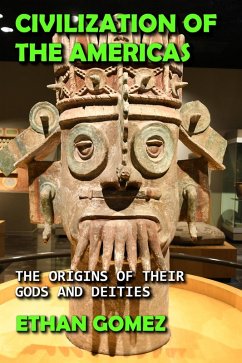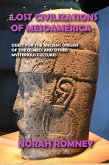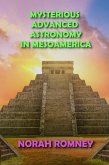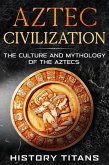There is much more to Mesoamerica than the Aztec, Mayan, and Toltec civilizations. In fact, several different ancient Mesoamerican civilizations had their own gods and religious beliefs. These civilizations included the Olmec civilization, Zapotec civilization, Teotihuacan civilization, Maya civilization, Toltec civilization, and Aztec civilization.
The Olmec civilization is the first known Mesoamerican civilization. The name Olmec comes from the Nahuatl word for rubber people, and they were pre-Columbian people living in what is now southern Mexico, in the modern-day states of Veracruz and Tabasco. The Olmecs are essential to history because they were the first Mesoamerican people to develop a writing system, use hieroglyphics, and construct significant stone monuments (such as pyramids).
The calendar developed by the Olmecs was one of their most remarkable achievements. They based their calendar on 365 days divided into 18 months of 20 days each plus 5 extra days at the end of each year-so it was different from our current calendar! They also used zero as part of their number system, which is why we still use it today!
The Zapotec civilization was in the Oaxaca Valley, Mexico. This Mesoamerican civilization was known for using the Mesoamerican writing system and art.
The Zapotecs were one of the first civilizations in Mexico to develop a writing system. They used it to write on stone or pottery, but we don't know what their language sounded like because no one left any written records about them or their lives, so all that remains is physical evidence, like pottery with pictures and hieroglyphs carved into it. This type of evidence is called epigraphic because it's an inscription on something else (like a statue).
The city of Teotihuacan was a center of trade and politics. It existed from about 300 BC until 600 AD when it was abandoned. The site has been a subject of archaeology since the 19th century; it is now an essential source of information on Mesoamerican civilization, among the most significant early cities in pre-Columbian America.
The Olmec civilization is the first known Mesoamerican civilization. The name Olmec comes from the Nahuatl word for rubber people, and they were pre-Columbian people living in what is now southern Mexico, in the modern-day states of Veracruz and Tabasco. The Olmecs are essential to history because they were the first Mesoamerican people to develop a writing system, use hieroglyphics, and construct significant stone monuments (such as pyramids).
The calendar developed by the Olmecs was one of their most remarkable achievements. They based their calendar on 365 days divided into 18 months of 20 days each plus 5 extra days at the end of each year-so it was different from our current calendar! They also used zero as part of their number system, which is why we still use it today!
The Zapotec civilization was in the Oaxaca Valley, Mexico. This Mesoamerican civilization was known for using the Mesoamerican writing system and art.
The Zapotecs were one of the first civilizations in Mexico to develop a writing system. They used it to write on stone or pottery, but we don't know what their language sounded like because no one left any written records about them or their lives, so all that remains is physical evidence, like pottery with pictures and hieroglyphs carved into it. This type of evidence is called epigraphic because it's an inscription on something else (like a statue).
The city of Teotihuacan was a center of trade and politics. It existed from about 300 BC until 600 AD when it was abandoned. The site has been a subject of archaeology since the 19th century; it is now an essential source of information on Mesoamerican civilization, among the most significant early cities in pre-Columbian America.
Dieser Download kann aus rechtlichen Gründen nur mit Rechnungsadresse in A, B, CY, CZ, D, DK, EW, E, FIN, F, GR, H, IRL, I, LT, L, LR, M, NL, PL, P, R, S, SLO, SK ausgeliefert werden.









